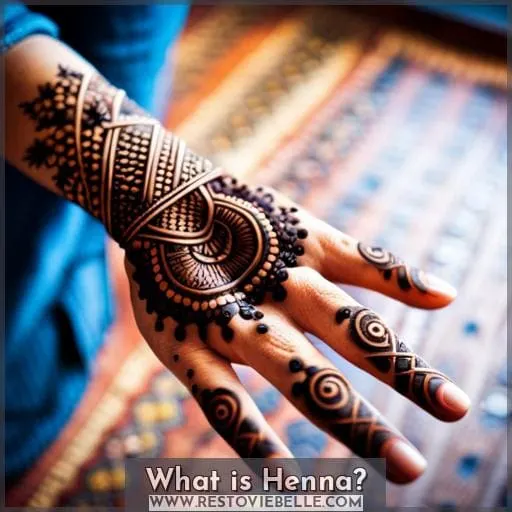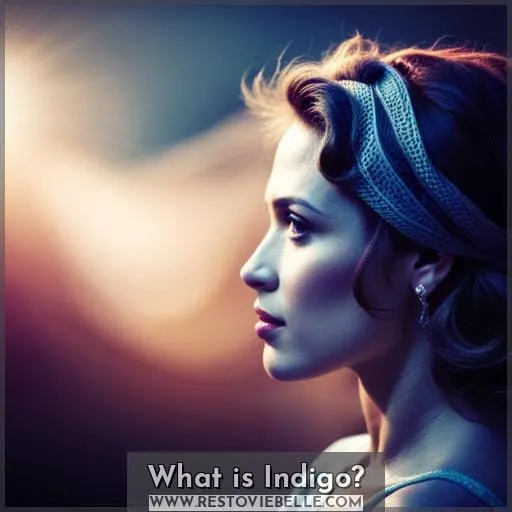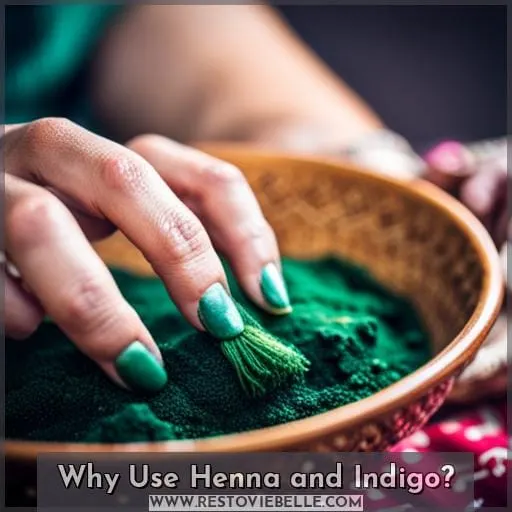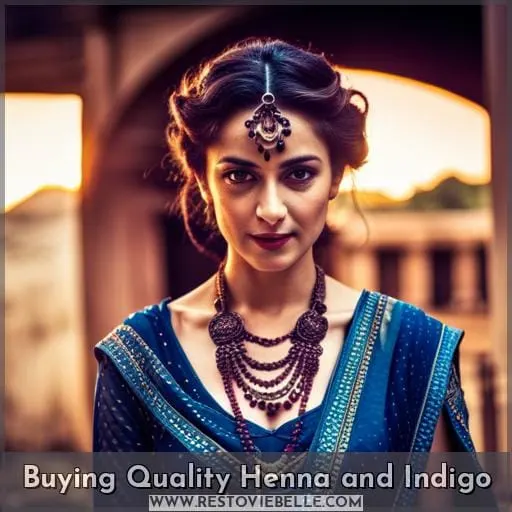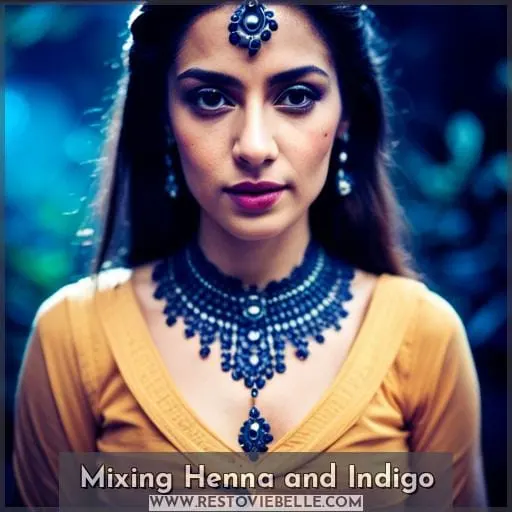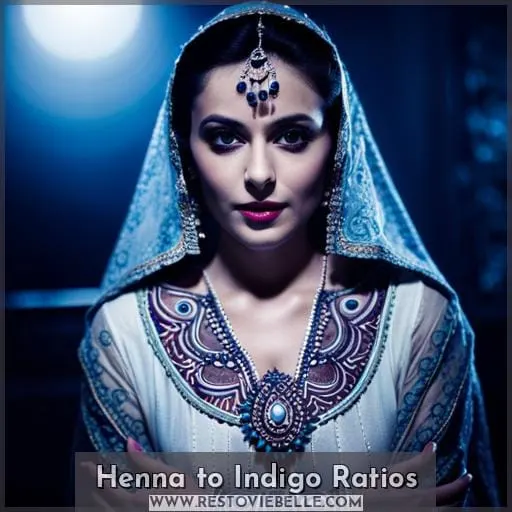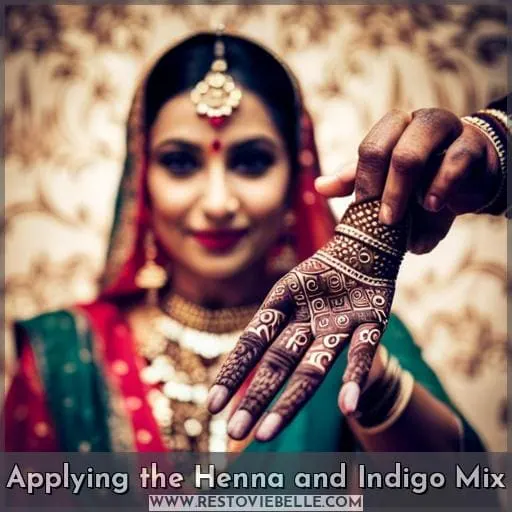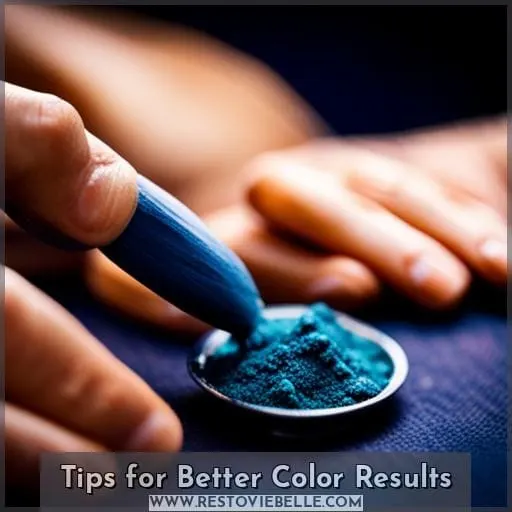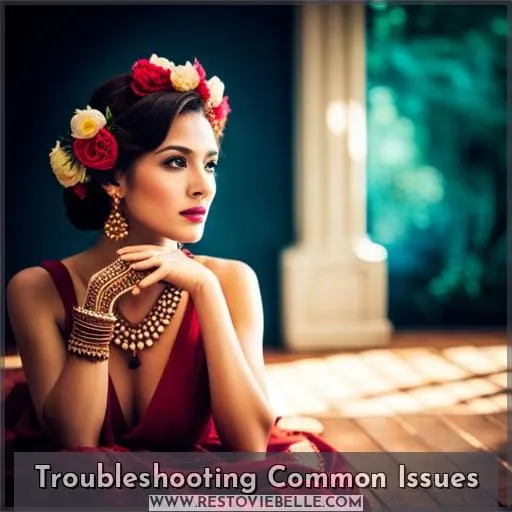This site is supported by our readers. We may earn a commission, at no cost to you, if you purchase through links.
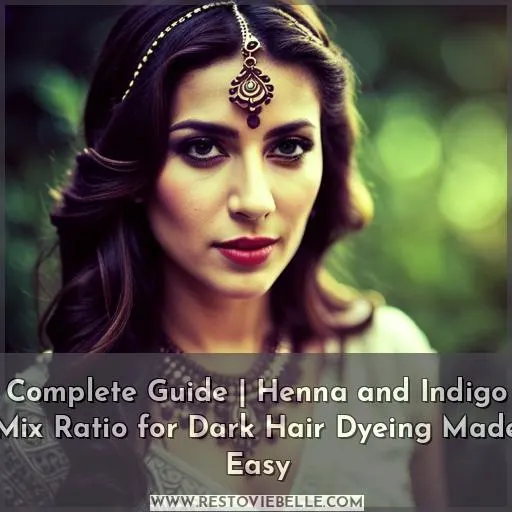 You know your locks deserve better than chemicals. Bring life back to your curls with natural plant power! Rediscover soft, nourished strands with henna and indigo— nature’s hair heroes. These dynamic plants impart rich color without damage, leaving hair renewed. Get creative with custom mixes just for you.
You know your locks deserve better than chemicals. Bring life back to your curls with natural plant power! Rediscover soft, nourished strands with henna and indigo— nature’s hair heroes. These dynamic plants impart rich color without damage, leaving hair renewed. Get creative with custom mixes just for you.
But beware, not all ratios give luscious shades. Follow our tested henna and indigo mix ratio and your tresses will be transformed. Say goodbye to harsh dyes and risky perms. Let plants bring out your inner beauty.
Table Of Contents
Key Takeaways
- Henna conditions and strengthens hair while indigo neutralizes warm tones for cooler results.
- Varying the henna-indigo ratio achieves different shades such as warm tones, ashy brown, and cool dark brown.
- Black hair requires separate henna and indigo steps, since indigo provides the deep blue-black color.
- High quality ingredients and expert guidance are vital for good results when using henna and indigo on hair.
What is Henna?
Henna is a plant-based hair dye that comes from the leaves of the Lawsonia inermis plant and imparts a reddish-orange hue. It conditions, strengthens, and adds rich color to hair. To get darker brown or black tones, you’ll need to mix henna with indigo.
Start with a pure henna mix and apply that first for complete coverage. After it oxidizes, follow up with an indigo mix. A 1:1 ratio of henna and indigo generally provides a dark brown shade, while a 1:2 ratio gives deeper black tones.
Always do a strand test to confirm your customized mix before applying. With the right proportions and some trial and error, you can create beautiful, natural-looking color with these ayurvedic herbs.
What is Indigo?
You ought to try some indigo after doing henna for that cooler raven shade. Indigo’s got mad color properties that’ll give your hair a deep, dark blue-black when combined with henna. Just be sure to let the henna oxidize first before applying the indigo. Mix the indigo fresh like the henna, following the instructions.
The indigo will bind to the henna and take your hair to a midnight perfection. It’s all natural too, so you get vibrant color without frying your locks. Just watch out for stains and keep it off your skin. Your inner freedom will shine through those glossy tresses.
Trust the process; give it time to work its magic. Indigo’s your path to belonging in the midnight hair club.
Why Use Henna and Indigo?
As a herbalist, I get the draw of using henna and indigo to color your hair. Henna offers incredible conditioning benefits, leaving hair strong, smooth, and shiny. When paired with indigo, you can make stunning neutral and cool-toned hues not doable with henna alone.
Indigo neutralizes henna’s warm undertones for ash browns, deep blacks, and subtle greys. By tweaking your henna and indigo ratio, you can tailor your perfect shade. Begin with henna to coat and condition strands before applying indigo.
Use more indigo for darker or cooler results. With the right techniques and mix ratios, you can safely color your hair while deeply nourishing it. Try out henna and indigo – the possibilities for gorgeous, natural hair color are endless.
Buying Quality Henna and Indigo
Quality outcomes start by sourcing pure henna and indigo. When choosing suppliers, carefully compare products and prices. Seek out reputable brands known for quality assurance and read verified customer reviews.
Feedback from real users provides invaluable insight into a product’s purity and dye release. Comparison shop trusted herbalists and ayurvedic suppliers specializing in body art quality henna and indigo.
Request lab reports and dye release tests for assurance. Select reasonably priced, fresh stock with optimal lawsone content for rich, long-lasting color. Consult experienced henna hair colorists for guidance identifying quality powders and trusted vendors.
With quality natural hair dyes and proper technique, you can achieve beautiful, vibrant henna and indigo hair coloring safely and affordably.
Mixing Henna and Indigo
Get the perfect shade by experimenting with the henna-indigo mix. The ratio can dramatically impact your results. For warm reddish brown tones, use 2 parts henna to 1 part indigo. Mix equal parts henna and indigo for a more ashy brown.
Increase the indigo to 2 parts for cool dark brown tones. Using a 3:1 ratio of henna to indigo will produce nearly black results.
If you have an itchy scalp after coloring, try our customized hair consultation to find your ideal recipe. For visual guidance, check out the video tutorial on mixing henna and indigo for healthier natural hair.
Henna to Indigo Ratios
When blending henna and indigo for cool hair tones, the ratios are key. For light brown, mix one part indigo to two parts henna. Darker brunettes should use equal parts or even two parts indigo to one part henna.
Mix the powders with room temperature water, strained herbal tea, or lemon juice to help release the dye. The henna’s applied first, rinsed after 1-2 hours before the indigo. Indigo needs an acidic environment to properly bond to hair.
Follow immediately with the indigo mix. Process for another hour, then rinse thoroughly.
Melanin levels and natural hair color impact the final results. Be patient during the oxidation period for cool tones to fully develop. With proper blending techniques, stunning neutral and cool effects can be achieved with natural henna and indigo.
Applying the Henna and Indigo Mix
You’ve freshly blended your henna and indigo mixture. Now section clean, dry strands and work the paste through from roots to ends using an applicator brush. As the herbalist massages the indigo application into the lengths, take care not to saturate the scalp, which may lead to skin irritation.
Expect color variations as the oxidation process reveals the intended tones over 24-48 hours. Mixes incorporating Amla yield cooler results, while omitting the fruit promotes warmer hues. With time and patience, this plant-based method binds the strand, delivering subtle dimension or saturated color.
Regular scalp conditioning keeps skin balanced. Honor the process, embracing its gradual reveal. Applied with mindfulness, henna and indigo gift vibrancy reflecting your inner light.
Tips for Better Color Results
Patience pays off when allowing the natural oxidation process to reveal those cool jet black tones you’re dreaming of.
- Soak in an amla tea rinse to enhance the deep color.
- Allow the henna and indigo to oxidize overnight without washing out early.
- Avoid heat styling for several days after application.
- Schedule a follow-up hair consultation to evaluate results and adjust your mix if needed.
Mixing henna and indigo requires precision, but patience allows the colors to fully develop. Trust the natural staining process for rich, beautiful black tones. We’re here to guide you each step of the journey to your best hair yet.
Troubleshooting Common Issues
As someone who frequently colors hair with natural plant dyes, I get the frustration of not getting your wanted results.
Start by examining your mix ratio. Did you use enough indigo for those cool ashy tones? Generally a 2:1 or 3:1 ratio of henna to indigo works best.
| Hair Color | Henna | Indigo |
|---|---|---|
| Light brown | 1 part | 2 parts |
| Dark brown | 1 part | 3 parts |
| Black | 1 part | 4 parts |
Test strands first when playing with ratios. And know color develops over several days. So patience is key! With some tweaking, you’ll nail that perfect henna-indigo recipe for your hair.
Conclusion
You’ve come to the right place for expert guidance on henna and indigo hair dyeing. With the correct 2:1 henna to indigo ratio, you can achieve those deep, dark hues safely and naturally. Trust the process, do your research, and your hair will shine with the rich tones found in nature itself.
Though it may require more patience than chemical dyes, you’ll reap the rewards of healthier strands. Let your hair color reflect your inner beauty. With henna and indigo applied properly, your tresses will entrance with their depth and dimension.
Now go forth and dye, knowing the perfect ratio for your goals. The earth provides – you experiment and create!

